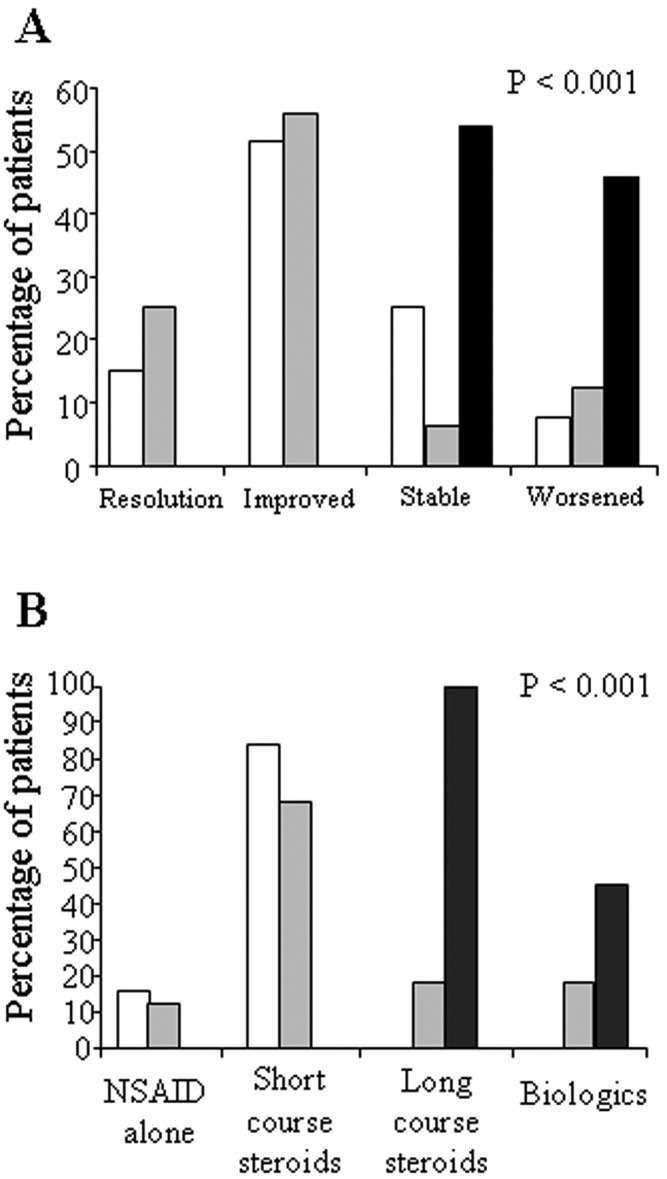Figure 3.

Course of spontaneous disease, defined according to categories of spontaneous resolution, spontaneous improvement, stable disease, or worsened disease (see Patients and Methods), before any continuous treatment (A), and therapeutic strategy at the time of the last followup (B) in the 3 subgroups of pediatric patients. The mean followup from disease onset was 7.9 years (range 1.6–15 years) for patients with tumor necrosis factor receptor–associated periodic syndrome (TRAPS) (n = 11; solid bars), 7.3 years (range 1.7–14.3 years) for children with the R92Q substitution (n = 16; shaded bars), and 5.2 years (range 1.2–13.1 years) for children with periodic fever, aphthosis, pharyngitis, and adenitis syndrome (n = 64; open bars). P values indicate the significance of the differences in the TRAPS patients compared with the other groups, according to the chi-square test for heterogeneity. NSAID = nonsteroidal antiinflammatory drug.
